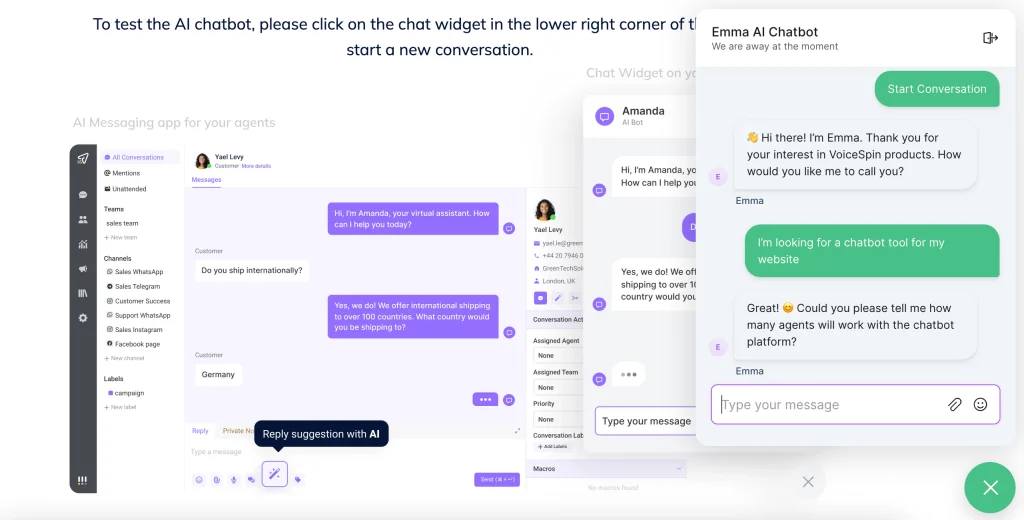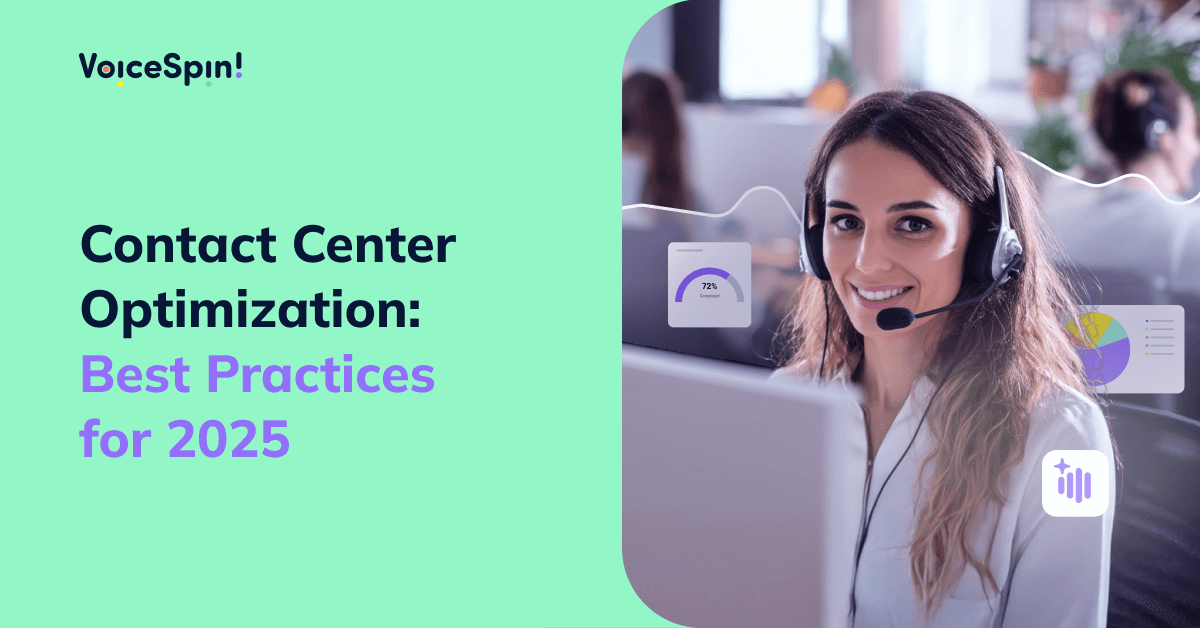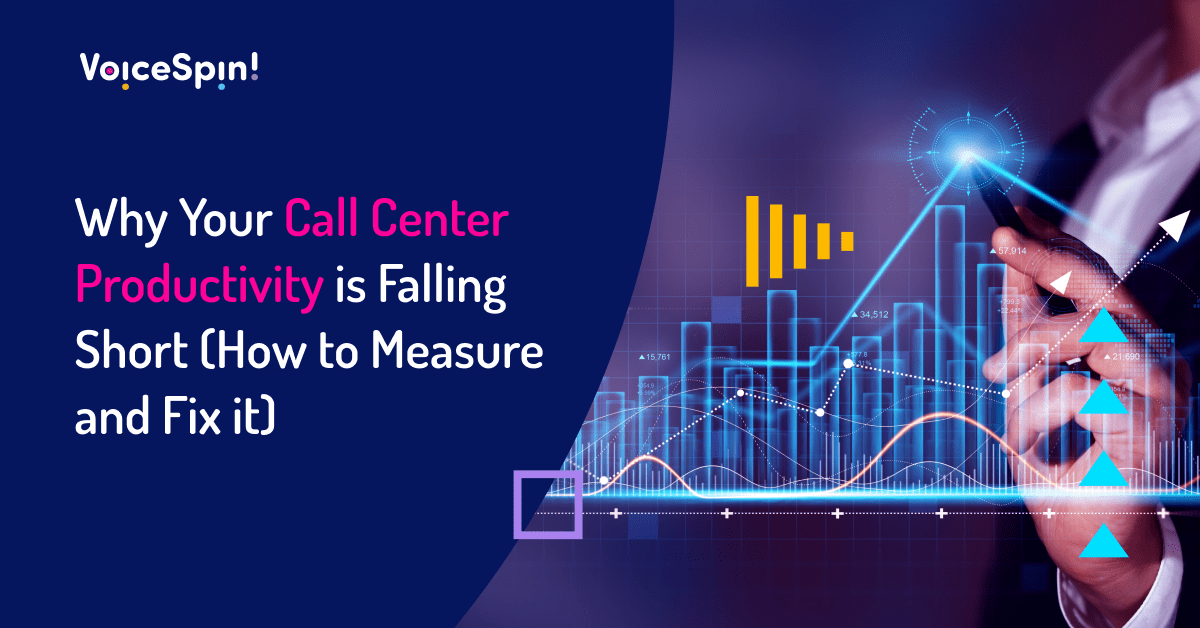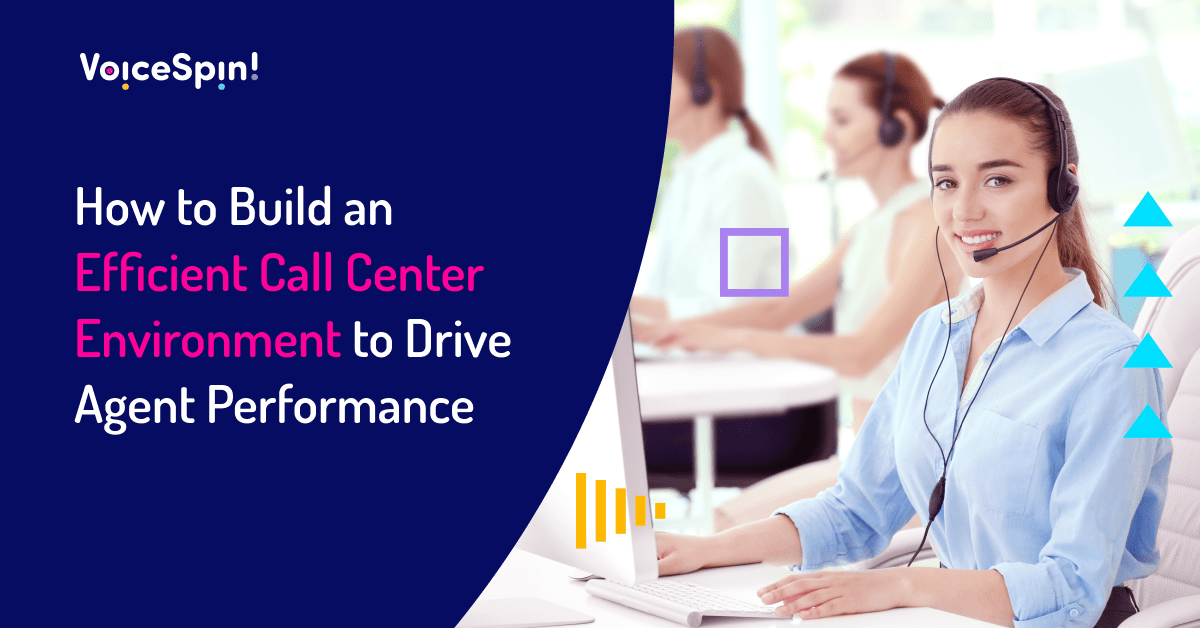Contact centers are evolving faster than ever before. And rightly so. Customers are constantly raising the bar on service expectations across channels, demanding instant support no matter when and where they reach out to brands. And considering the fierce competition out there in the market (whatever industry you’re in), businesses must live up to these expectations – otherwise, they risk losing customers and revenue. This is why contact center optimization is not an option – it’s a necessity.
Optimizing your contact center operations, processes, and workflows ultimately means better and faster service for your customers, less stress for your agents, improved operational efficiency, and higher ROI.
In this article, we’ll cover the best practices for contact center optimization that are relevant in 2025 and beyond. Starting with the definition and a quick overview of the key challenges contact centers are facing today, we’ll move on to the exact steps you can take to optimize your contact center and maximize its efficiency.
What is Contact Center Optimization?
Contact center optimization is the continuous process of improving the efficiency, performance, and customer experience of your contact center. It is basically how you ensure you have the right technologies, systems, and processes in place to maintain high levels of customer satisfaction, agent productivity, and operational efficiency. Now, that means the key goals of your contact center optimization are:
- Improve CX and customer satisfaction to meet customer expectations
- Increase agent productivity without overwhelming your reps
- Reduce operational costs without compromising on service quality
Key Challenges Contact Centers are Facing in 2025
The need for contact center optimization naturally comes from the challenges most contact centers and call centers are facing today. Let’s take a look at them in more detail:
Rising customer expectations and demand for omnichannel experiences
Customer expectations are changing at a lightning pace. Just think about it. A decade ago, customers expected the basics – decent service and a fair price. But that’s no longer the case. Today’s consumers are much more demanding. They want instant support, connected experiences across channels, hyper-personalization – you name it! For example, according to data from Salesforce:
- 85% of customers expect consistent interactions across departments
- 83% expect to interact with someone immediately when they contact a company
- 73% expect better personalization as technology advances
- 65% expect companies to adapt to their changing needs and preferences
AI integration challenges and AI adoption resistance
The latest advancements in Artificial Intelligence present both incredible opportunities and challenges for contact centers. While AI-powered chatbots and voice bots can handle basic interactions and automate repetitive tasks, they aren’t able to effectively resolve complex issues due to their lack of empathy and emotional intelligence.
According to Calabrio’s 2025 State of the Contact Center report, 98% of contact centers have already implemented AI into their operations. However, 61% of contact center leaders say customer conversations have become more challenging because AI is not designed to handle complex, emotionally charged interactions.
On top of that, integrating AI-powered technologies into existing systems can be complicated, costly, and time-consuming. And at the same time, AI adoption may face resistance from contact center employees who fear AI will eventually take their jobs.
Increased agent burnout and high turnover rates
Burnout and high turnover rates have always been an issue in call centers and contact centers. Agents are constantly expected to meet rising customer expectations and deliver outstanding experiences – all while handling customer interactions across multiple channels and often having to switch between disjointed systems.
Plus, lots of repetitive tasks, emotionally challenging customer interactions, inadequate training, and lack of engagement and support can all add to their stress levels, cause excessive burnout, and lead to high turnover.
While contact centers have historically had a 30 – 45% average annual agent turnover rate, data from Cresta shows that contact center agent turnover has jumped to as high as nearly 80% since the pandemic.
When turnover happens, it takes time to replace vacant positions. With fewer reps to handle customer inquiries, team productivity decreases and customer satisfaction suffers. And it’s no secret that turnover is costly. In fact, it may cost between $10,000–$20,000 to replace a call center agent.
Best Practices for Contact Center Optimization in 2025
So, what exactly can you do to optimize your contact center processes in 2025? Here are the top 5 best practices you can start implementing today to optimize your contact center operations while improving CX and agent experience and reducing call center costs.
Implement AI to streamline your contact center operations
AI chatbots (to automatically resolve basic customer support requests)
Implementing an AI chatbot is an excellent way to reduce your inbound call volume and the overall number of customer interactions that need human assistance, lightening the load on your contact center agents.
AI-powered chatbots can answer FAQs in a conversational way, provide accurate information about your products or services, and help customers resolve basic issues. Better yet, when integrated with back-end systems (like CRM, helpdesk tools, e-commerce platforms, and calendar software), an AI chatbot solution for contact centers can perform specific actions like:
- Tracking order statuses
- Handling order returns and refunds
- Scheduling appointments
- Making reservations
- Updating account information
- Renewing subscriptions
- Providing tailored product recommendations
Based on a report from Botco.ai, 76% of contact centers leverage chatbot technologies. And nearly half (47%) of respondents said chatbots help their contact centers deflect between 20% and 30% of inbound calls.
Recommended reading: Customer Service Chatbots: A Complete Guide for 2025
AI voice bots (to handle customer calls without human intervention)
If voice remains the main communication channel in your contact center, implementing an AI voice bot can be a real game-changer in optimizing your call center operations. While it’s true that AI voice bots (otherwise known as AI voice agents) are still in their early stages of development, they are already becoming tremendously popular. A conversational AI voice bot for contact center can interact with your customers or prospects through natural dialogue and provide immediate responses without having to put anyone on hold.
Research from Invoca reveals that 5% of callers hang up immediately when being placed on hold, 28% disconnect within five minutes, and only 6% are willing to wait on hold for 30 minutes or longer.
And not only do AI voice bots eliminate wait times and improve customer satisfaction. In addition to being great customer service automation tools, they can also be used in sales. AI voice bots can qualify leads (ensuring that no opportunity slips through the cracks), book sales meetings and demo calls, and even handle outbound cold calls independently, reducing your team’s workload.
Recommended reading: Customer Service AI Voice Bots: The Ultimate Guide
AI predictive dialers (to increase the efficiency of outbound calling campaigns)
If your team handles large volumes of outbound calls – you can optimize the entire process with a predictive dialer. AI-powered predictive dialers aren’t just basic auto dialer solutions that dial numbers automatically, so your reps don’t have to do it manually. They can boost your team’s productivity by reducing idle time between calls and allowing you to increase the number of calls agents can handle.
What does it look like in practice? Predictive dialers initiate multiple outbound calls per agent before an agent becomes available. They use AI and ML (machine learning) to predict agent availability and automatically adjust the dialing pace based on the number of available reps, the average call duration, call abandonment rate, and other real-time and historical metrics. That means each agent is connected to the next call as soon they complete their current interaction.
VoiceSpin’s AI predictive dialer goes even further than that. It can intelligently score your leads and connect them to the best-suited agent based on the probability of a successful call outcome, helping you maximize conversions. Plus, you can increase the efficiency of your outbound calling campaigns with features like:
- Local caller ID
- Automated voicemail drop
- DNC list filtering
- Number reputation management
Based on multiple stats, predictive dialers can boost contact rates by 20% to 50% and increase agent productivity by 200% to 300% compared to manual dialing, resulting from increased talk time and reduced idle periods.
Recommended reading: 5 Best Predictive Dialer Software for 2025
Make your contact center truly omnichannel
The demand for omnichannel experiences is real. Study after study proves that today’s consumers (both B2B and B2C buyers) use multiple channels to interact with brands depending on the context – and they often switch channels during their buying journey.
For example, McKinsey’s research found that over 50% of customers engage with three to five channels during each journey they take toward making a purchase or resolving a request. In reality, however, most contact centers still struggle to deliver omnichannel experiences.
According to a Deloitte Digital report, 40% of organizations serving customers in multiple channels say their channels are isolated, lacking visibility into previous customer interactions. And only 7% of contact centers offering multichannel support are able to transition customers between channels seamlessly by providing customer data, history, and context to the next agent or system.
The bottom line: to optimize your contact center for better customer experience and team efficiency, integrate your communication channels into one omnichannel platform and allow your customers to move between channels without having to repeat themselves. That can improve your Customer Satisfaction Scores (CSAT) and other metrics like resolution times and FCR rates. And it improves the experience for your reps, too.
Recommended reading: Contact Center Industry Trends for 2025 and Beyond
Automate your performance monitoring process
Staying on top of your contact center’s performance is essential for call center optimization. But simply monitoring a standard set of KPIs (Key Performance Indicators) and screening a random sample of customer calls manually won’t cut it anymore. It’s less effective and nearly impossible to scale as call volumes grow.
Fortunately, by implementing AI speech analytics tools, you can automate this process and reduce the need for manual call screening. Automated performance monitoring also minimizes human errors and biases.
For example, VoiceSpin’s AI Speech Analyzer can monitor and evaluate 100% of your calls based on your specific metrics and KPIs, reducing the time and effort of your call center team. It can transcribe, summarize, and extract valuable insights from every call, helping you automate performance monitoring, maintain compliance, understand where improvements are needed, and better inform your decision-making.
Overall, AI speech analytics tools can help you answer questions like:
- What are our customers’ primary complaints and pain points?
- What is the root cause of repeat calls or unresolved issues?
- Are customers happy or frustrated during interactions? (sentiment analysis)
- What trends or preferences are emerging among customers?
- Who are our top-performing and lower-performing agents?
- Are agents following scrips and best practices?
- Are agents adhering to compliance regulations?
- Are agents effectively upselling or cross-selling?
Armed with these insights, you can adjust your processes, improve call scripts, enhance agents’ training and coaching, and ultimately improve your contact center’s operational efficiency.
Optimize your employee experience
For call center optimization, your employee experience is just as important as customer experience. We’ve already mentioned the insanely high turnover rates among contact center employees and how much it can cost to replace a frontline agent. Improving your agent experience helps increase job satisfaction and engagement, prevents burnout, and reduces your turnover rate (while also lowering your operational costs). Here’s what improving agent experience involves:
✓ Setting your reps up for success with a strong onboarding process
Strong onboarding is critical. It builds the foundation for higher job satisfaction, increases employee engagement, boosts productivity, and improves retention. And it also enables your newly hired reps to get up to speed faster. If you don’t have an effective onboarding process yet, it’s time to rethink your strategy and the way you support your new hires.
According to the 2024 State of Employee Onboarding report from Enboarder, employees who rated their onboarding experience positively were 46% more likely to express satisfaction with their job decision, while around 40% reported increased productivity.
Recommended reading: Call Center Agent Onboarding in the Age of AI
✓ Reducing (and preventing) workplace burnout and job-related stress
It’s no secret that contact center jobs are stressful. And that stress may be caused by a variety of reasons like heavy workload, unrealistic KPIs, poor work-life balance, having to deal with difficult customers on a daily basis, lack of empowerment, ineffective leadership, constant micromanagement, inefficient training and ongoing support, lack of recognition and career growth – and the list goes on. The outcome? Increased burnout, absenteeism, and (again) turnover.
A study by Toister Performance Solutions revealed that 59% of contact center agents are at risk of burnout, while 28% of them face a severe burnout risk.
There’s no better way to understand what actually causes stress and burnout than to simply ask your agents directly through employee surveys and 1:1 feedback sessions. Once you know exactly where stress and burnout come from, make sure to address the root causes immediately. Preventing agent burnout before it becomes a major problem in your contact center is always better than dealing with the consequences later on.
✓ Recognizing and rewarding your reps with meaningful incentives
Employee recognition plays a key role in contact center workforce optimization, but unfortunately, it’s being overlooked way too often. Naturally, when employees feel appreciated and valued, job satisfaction increases, morale improves, and productivity soars. And did you know that even a simple ‘thank you’ from a manager can make a difference in employee well-being?
Based on a report from Reward Gateway, 66% of U.S. employees agree their work well-being would improve if they were simply thanked more for their hard work; and 60% want their employer to increase their investment in employee reward and recognition.
But here’s the hitch when it comes to employee rewards and incentives.
According to research from Blackhawk Network, in many cases, incentives employees would like to get from employers are not aligned with their employer’s offerings.
Whether it’s performance-based bonuses, extra paid time-off, flexible scheduling, wellness perks, or anything else in between – make sure the rewards and incentives you provide are meaningful to your reps.
Recommended reading: Call Center Incentive Ideas Your Agents Will Love
Next Steps: How VoiceSpin Can Help with Your Contact Center Optimization
Optimizing your contact center operations and processes needs strategy, planning, and execution. More importantly, you obviously can’t rely on an outdated contact center tech stack anymore. To truly improve operational efficiency and reduce costs without compromising on your customer and agent experience, integrating AI into your contact center is a must-have.

Here’s how VoiceSpin’s AI contact center software solutions can help you in your contact center optimization process:
- AI chatbots: With an AI chatbot, you can support your customers 24/7, reducing the load on your team and improving customer satisfaction. Our AI-powered chatbot uses NLP to understand and interpret human language, responds in a conversational way, supports 50+ languages, and can be deployed on various digital channels.
- AI voice bots: With an AI voice agent, customer calls can be handled automatically. The voice bot can respond to inbound calls, resolve basic support requests, make cold calls, handle the initial lead qualification, and schedule appointments, freeing up your team to focus on complex issues and high-value interactions.
- AI Messaging: VoiceSpin’s AI Messaging allows you to unify multiple digital communication channels (including email, social media, and WhatsApp) into a single platform, so your reps can handle all customer interactions from one omnichannel inbox and deliver a seamless CX across all integrated channels.
- AI predictive dialer: An AI predictive dialer empowers your contact center team to make more outbound calls in less time. The dialer skips unproductive numbers and busy signals, leaves voicemails automatically, and connects leads to the best-suited reps, increasing the efficiency of your cold calling campaigns.
- AI speech analytics: VoiceSpin’s AI Speech Analyzer can analyze 100% of your inbound and outbound calls, evaluate the quality of customer interactions and your team’s performance based on your custom metrics and KPIs, and help you maintain compliance through keyword spotting and real-time alerts.
Book a demo call with one of our sales reps now to learn more about these and other VoiceSpin’s contact center solutions and how they can help you optimize your contact center, improve CX, and make your reps more productive without burning them out.
Frequently Asked Questions
How can AI help optimize contact center performance?
AI helps optimize contact center performance by automating operations and tasks that were once done manually. For example, AI chatbots and voice bots can automatically handle customer interactions and resolve basic customer requests, so your human reps can focus on more complex interactions. Additionally, AI-driven speech analytics tools can automate your performance monitoring process and help you uncover inefficiencies and agent training gaps faster and more effectively.
How does contact center optimization improve customer experience?
Contact center optimization can improve customer experience in different ways. Firstly, integrating all your communication channels enables your reps to deliver seamless omnichannel experiences even if customers switch channels. Secondly, by implementing AI chatbots and voice bots, you can ensure your customers get immediate support (with no wait times) no matter when they reach out. Finally, optimizing your contact center employee experience creates a happier workplace environment where reps are committed to serving your customers better.
What is the 80/20 rule in a contact center?
The most common interpretation of the 80/20 rules in contact centers and call centers is the service level standard that aims to answer 80% of customer calls within 20 seconds. For example, if your contact center receives 1000 calls per day, the goal is to answer at least 800 calls within 20 seconds. This standard is often used as the industry benchmark for measuring a contact center’s responsiveness and operational efficiency. Yet, it doesn’t necessarily impact customer satisfaction or the quality of resolutions.
What are the key metrics for measuring contact center performance?
Here are some of the key metrics and KPIs to measure to stay on top of your contact center’s performance in 2025:
- Average Speed of Answer (ASA): the average time it takes for an incoming call/ chat to be answered by a support agent.
- Average Handle Time (AHT): the average duration of customer interactions, including talk time, hold time, and after-call work.
- First Contact Resolution Rate (FCR): the percentage of customer issues resolved during the first interaction without requiring follow-ups.
- Call Abandonment Rate: the percentage of calls terminated by customers before reaching a live agent.
- Customer Satisfaction Score (CSAT): the level of satisfaction (or dissatisfaction) and customers’ perception of the service they received.
- Customer Effort Score (CES): measures how easy it was for your customers to get their issues resolved.
- Agent Utilization Rate: the percentage of time agents spend handling customer interactions compared to idle time or non-productive activities.





 +18889082995
+18889082995
 +442036084160
+442036084160
 +97237237006
+97237237006